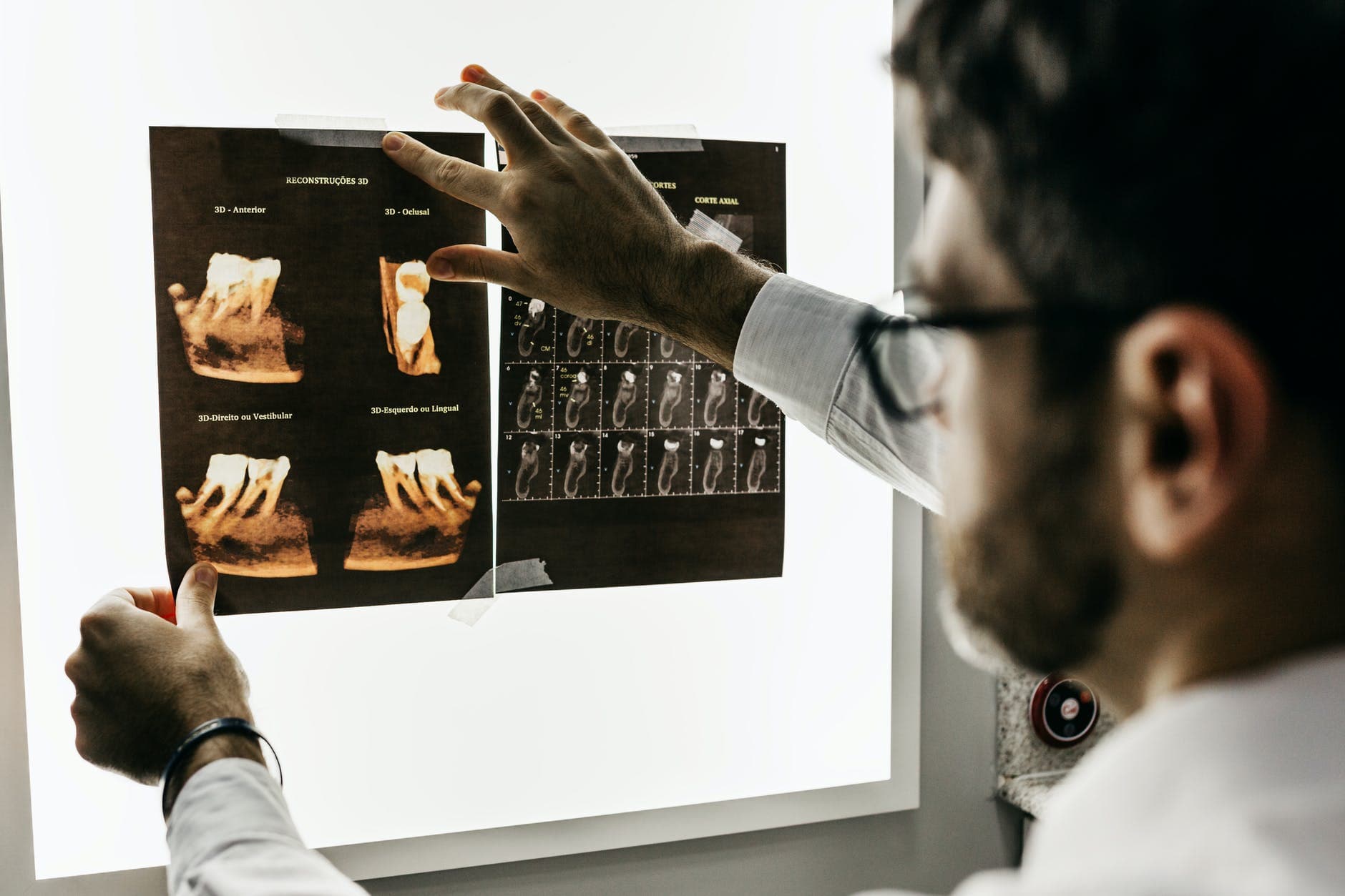
X-rays are an essential part of your dental visit. They help our dental team see in detail what can’t always be seen by just looking in your mouth. Did you know that without dental x-rays, it is impossible to give an accurate diagnosis of cavities or gum health? X-rays help us to see the details, whether that be in your teeth or your jaw. These images tell us so much about your mouth!
What Are We Looking For When We Examine Your X-rays?
When it comes to evaluating your dental health, a visual exam can only go so far. Although being able to pull back your gum tissue to see what is going on beneath the surface would be great for dental clinicians, it’s not how you were designed. Thankfully, x-rays allow us to see in these hidden areas.
X-rays also can verify areas of clinical concern. If your dentist sees something suspicious regarding a tooth or your gum tissue, an x-ray can help verify what is going on.
Look at the many things that can be examined and diagnosed by x-rays:
- Cavities – When a tooth has a cavity it appears as a dark area on the x-ray. Cavities on the tops and sides of teeth can often be seen clinically, but any areas between teeth are usually diagnosed through x-rays.
- Periodontal disease – X-rays help to show bone levels supporting your teeth. This bone is surrounded by gum tissue, so without x-rays, it is impossible to evaluate healthy or unhealthy bone levels.
- Abscesses – You might have had a tooth infection, or you may develop one in your life. Some people experience lots of pain and are aware that they have a problem, but sometimes abscesses are not painful. X-rays can help to diagnose abscesses.
- Abnormal growths – X-rays can help to identify abnormal growths of many kinds, including bony growths, dental cysts, and even cancer.
- Tooth position – X-rays can help to verify the position of a tooth or teeth in the mouth. Orthodontists often refer to x-rays when identifying the position of their patient’s teeth.
- Missing teeth – X-rays can help identify whether a tooth is present below the gum tissue.
- Conditions of the jaw – X-rays can be used to identify jaw structures and temporomandibular joint areas.
- Damaged teeth – Cracked and worn teeth can be further examined by x-ray.
- Impacted wisdom teeth – If your wisdom teeth haven’t erupted, your dentist can use x-rays to verify if you have them and how they are positioned.
- Old dental restorations – X-rays can help show how your old dental restorations are functioning. Are they doing their job, or are you in need of a new filling?
- And more!
How Often Do You Need X-rays?
Everyone’s dental health is different; therefore, the x-rays you need may differ from the x-rays that someone else needs. X-rays are a routine part of dental visits because your teeth and gum tissue can change a lot from year to year.
Often changes in tooth structure and gum health can go unnoticed by a patient. Thus we need to be monitoring these changes in the dental office. One of the best ways to monitor decay and bone levels is through taking and comparing routine x-rays. Depending on your history of decay and your health history, your dentist may recommend x-rays every six months, every year, or every two years.
What Are The Different Types Of X-rays?
Just like the interval at which x-rays are taken vary, so can the types of x-rays taken. Different x-rays show different areas or aspects of your mouth. The chances are that you have had routine bitewing x-rays taken, but you may have also had some of these others taken as well.
Bitewing x-rays – These routine x-rays are usually taken yearly on children and adults. Usually, one or two bitewing images are taken on each side of the mouth. These x-rays are great for revealing interproximal areas and evaluating bone levels between the teeth.
Panoramic x-rays – This x-ray covers from one side of your jaw to the other side. This type of x-ray is commonly taken by orthodontists to identify which teeth are present and oral surgeons for wisdom teeth extractions.
Periapical x-ray – These are single x-rays that may be taken to show a specific tooth or area around a tooth. If you have a toothache or a fractured tooth, this type of localized x-ray may be taken of your tooth.
Full mouth series x-rays – This is a complete set of x-rays taken to show each area of your mouth in detail. This series usually includes 14 different images that show many things, including your teeth, the bone surrounding your teeth, your sinus cavities, and they can even show tartar buildup on your teeth.
X-rays are an essential step in your dental health. Diagnosing decay and gum problems early is vital for lifelong dental health. Do you have your next routine check-up scheduled? If not, contact us soon to get your next appointment scheduled and make sure that your dental health is on point.



Leave a Reply